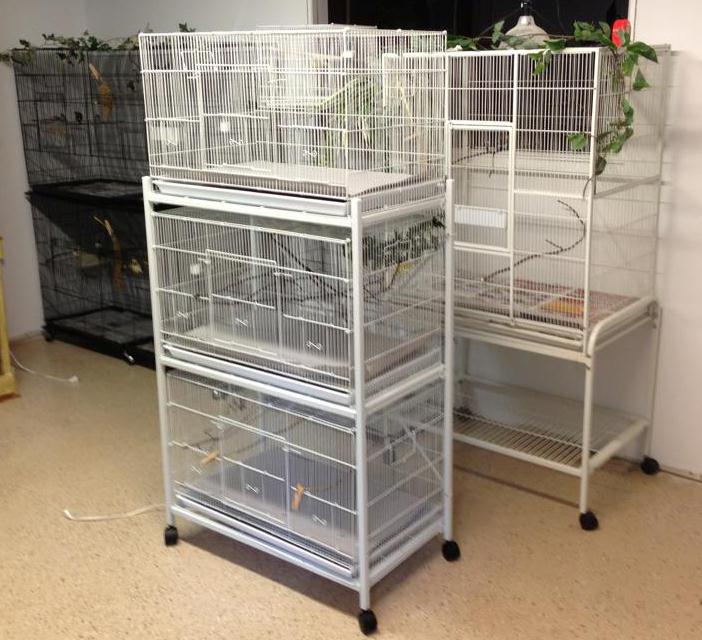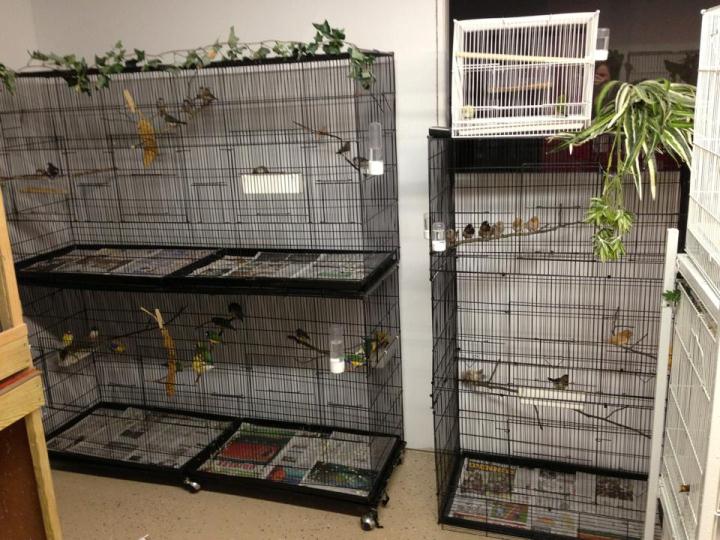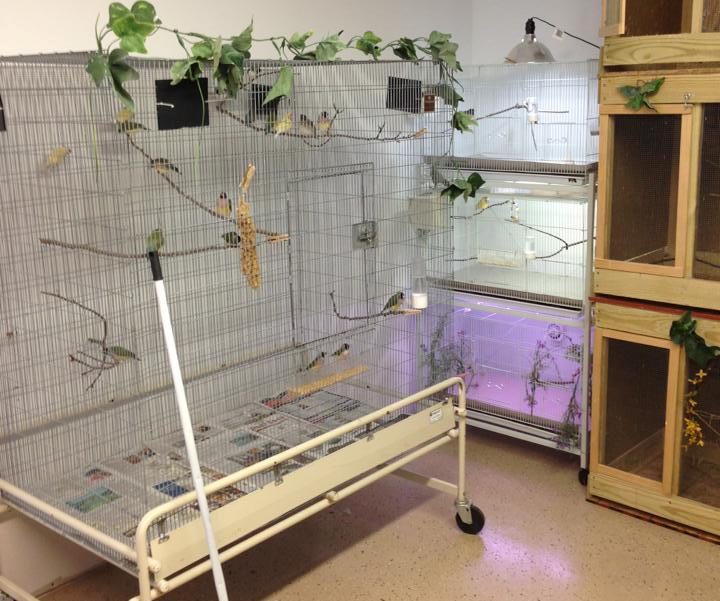|
Housing - Colony vs. Individual Breeding?
How to house your gouldians is not a difficult question - but there are many answers, and the answer is ultimately based on personal preference, especially if you intend on breeding.
Gouldians are, for the most part, not hand tame, and are active birds that need room for flight. Cages that are longer than they are tall are best because they offer the most flight room. Avoid placing too many distractions in the cage - or placing so many perches that birds can easily hop from one to the other rather than fly.
Colony vs. Individual Breeding
In colony breeding, all of the birds are placed in one large aviary and allowed to breed at will with partners they select. In individual breeding, pairs are selected by the owner and placed in breeding cages with no other birds. There is really no 'best' method to breed - there are many different reasons for breeding individually, and many reasons for breeding colony. There are also pros and cons to each. What you have to do is evaluate each method and decide which is best for you.
I practice individual breeding and do not colony breed. The reason I do not colony breed is because I am breeding with very specific intentions, and it is important for me to know the exact genetics/heritage of my offspring. I house my breeding pairs individually in cages that measure 30" x 18" x 18" at the very least.

Perches
I prefer to use natural branches when possible. I feel that natural branches tend to be better at keeping the nails filed down, and the birds just seem to enjoy them more, and heck, they're free!
Refer to an avian safe tree list when cutting branches for use in an aviary. For example, Cedar trees produce oils which are toxic to the birds. Generally speaking many fruiting trees and oaks are safe. I recommend providing a variety of widths in the perches to keep the feet exercised.
Lighting
For lighting, I use clamp style aluminum shaded fixtures that have the ceramic/porcelain socket (avoid anything else) as well as cabinet strip lighting (18"). I use 60w CFL bulbs in the clamp lamps that are the "DAYLIGHT" bulbs by the "N:Vision" brand found at Home Depot. The strip lights contain GE "Sunshine" bulbs which are sold at Lowes.
I find these bulbs work rather nicely and are not a huge drain on one's electric bill. There is a lot of buzz about "Full Spectrum" lights and the importance of UVB in D3 synthesis and calcium absorption. My opinion: There is really no substitute for natural sunlight. I do not think spending $25+ on a light bulb will result in significant changes in the birds internal chemistry or ability to manufacture D3 from these bulbs. I think with any caged indoor birds that do not get sufficient exposure to direct sunlight, it is important to supply a high quality avian supplement which contains D3 as well as a usable source of calcium (dark leafy greens are an excellent natural source of calcium).
Daylight hours
I use automatic digital timers with my lighting. My lights are set to turn on a little after sunrise, and they stay on for approximately 14 hours year round. They are on from about 7:00am - 9:15pm. My shut off time is staggered to where one set of lights will turn off at night about 15 minutes before the other, so the birds have time to settle in for the night rather than just being thrown into total darkness. The birds are very accustomed to the routine and usually are going to roost before the first sets of lights have gone out. It is important (especially in northern states where the sun sets very early in winter) to allow birds to have access to light for at least 12 hours to ensure they are getting enough to eat during the daytime hours and do not lose too much weight. If you notice your birds are becoming thin during winter, it may be because they do not have enough daylight to consume the amount of food they need.
Flights
I have a number of large flight cages which is where I keep my birds when they are not breeding. All species are divided by sex so that males and females are only kept together when they are breeding. I believe this is important for hormonal balance and the health of the birds. When birds are kept together with the opposite sex there tends to be stress at the hormonal level as the opposite sex tends to continue to drive the birds into breeding mode, not allowing for their bodies to rest.

A female Owl finch flight cage (top) and the male Gouldian flight cage. The tall cage to the right are male Society finches.

The female Gouldian flight cage, with a stack of breeding cages in the back.

|